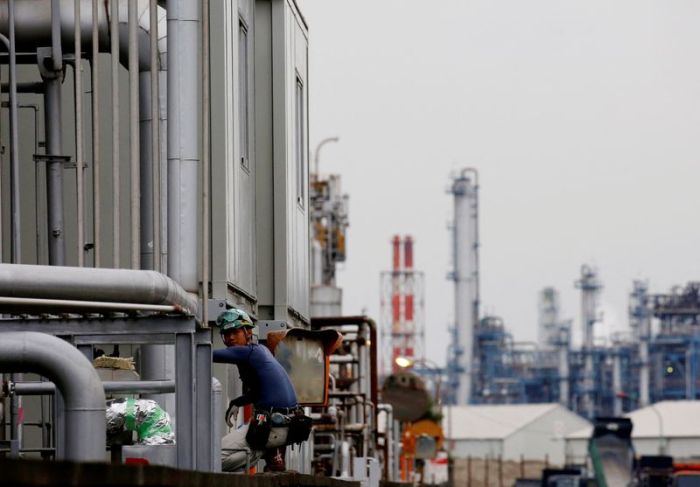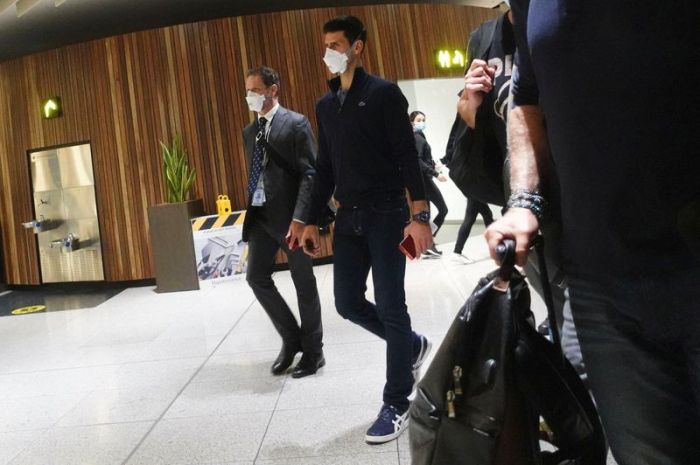SYDNEY/WELLINGTON (Reuters) -A distress signal has been detected in an isolated, low-lying group of islands in the Tonga archipelago following Saturday’s massive volcanic eruption and tsunami, the United Nations said, prompting particular concern for its inhabitants.
Initial reports suggested no mass casualties on the main island of Togatapu, but two people were reported missing and the capital Nuku’alofa was badly damaged, as were resorts and homes along the island’s western beaches, it said.
“Further volcanic activity cannot be ruled out,” the U.N. Office for the Coordination of Humanitarian Affairs (OCHA) said in the update on Monday, reporting only minor injuries but emphasising that formal assessments, especially of the outer islands, had yet to be released with communications badly hit.
The uninhabited volcanic island of Hunga-Tonga-Hunga-Ha’apai all but disappeared following the blast, according to satellite images from around 12 hours later. The Pacific archipelago was blanketed in ash and volcanic ash clouds spread to countries thousands of kilometres to the west.
The OCHA said there had been no contact from the Ha’apai group of islands and there was “particular concern” about two small low-lying islands – Fonoi and Mango, where an active distress beacon had been detected. According to the Tonga government, 36 people live on Mango and 69 on Fonoi.
Experts said the volcano, which last erupted in 2014, had been puffing away for about a month before rising magma, superheated to around 1,000 degrees Celsius, met with 20-degree seawater, causing an instantaneous and massive explosion.
The unusual “astounding” speed and force of the eruption indicated a greater force at play than simply magma meeting water, scientists said.
Australia and New Zealand sent surveillance flights on Monday to assess damage and Australia’s Minister for the Pacific Zed Seselja said Australian police had visited beaches and reported significant damage with “houses thrown around”.
British woman Angela Glover, who ran a dog charity in Tonga, was killed, her brother told British media.
The impact of the eruption was felt as far away as Fiji, New Zealand, the United States and Japan. Two people drowned off a beach in northern Peru due to high waves caused by the tsunami.
Tonga’s deputy head of mission in Australia, Curtis Tu’ihalangingie, said Tonga was concerned about the risk of aid deliveries spreading COVID-19 to the island, which is COVID-free.
“We don’t want to bring in another wave – a tsunami of COVID-19,” Tu’ihalangingie told Reuters by telephone.
“When people see such a huge explosion they want to help,” he said, but added Tonga diplomats were also concerned by some private fundraising efforts and urged the public to wait until a disaster relief fund was announced.
Any aid sent to Tonga would need to be quarantined, and it was likely no foreign personnel would be allowed to disembark aircraft, he said.
International communication has been severely hampered by damage to an undersea cable, which could take more than a week to restore, and Australia and New Zealand were assisting with satellite calls, he said.
Telephone networks in Tonga have been restored but ash was posing a major health concern, contaminating drinking water.
“Most people are not aware the ash is toxic and bad for them to breathe and they have to wear a mask,” Tu’ihalangingie said.
‘COMPLETELY DESTROYED’
The Ha’atafu Beach Resort, on the Hihifo peninsula, 21 km (13 miles) west of the capital Nuku’alofa, was “completely wiped out”, the owners said on Facebook.
The family that manages the resort had run for their lives through the bush to escape the tsunami, it said. “The whole western coastline has been completely destroyed along with Kanukupolu village,” the resort said.
The Red Cross said it was mobilising its network to respond to what it called the worst volcanic eruption the Pacific has experienced in decades.
Katie Greenwood, the Pacific head of delegation for the International Federation of Red Cross and Red Crescent Societies, told Reuters up to 80,000 people could have been affected by the tsunami.
Alexander Matheou, the federation’s Asia Pacific regional director, said water purification, providing shelter and reuniting families were the priorities – but they had yet to establish direct contact with colleagues on the ground and were relying on estimates based on previous such disasters.
Scientists https://www.reuters.com/article/us-tonga-volcano-science-explainer/explainer-scientists-struggle-to-monitor-tonga-volcano-after-massive-eruption-idUSKBN2JR0IS were struggling to monitor the volcano, after the explosion destroyed its sea-level crater and drowned its mass, obscuring it from satellites.
Hunga-Tonga-Hunga-Ha’apai has erupted regularly over the past few decades. Early data suggests the eruption was the biggest blast since Mount Pinatubo in the Philippines 30 years ago, New Zealand-based volcanologist Shane Cronin told Radio New Zealand.
“This is an eruption best witnessed from space,” Cronin said.
(Reporting by Praveen Menon and Kirsty Needham; Additional reporting by Emma Farge; Writing by Philippa Fletcher; Editing by Michael Perry, Robert Birsel and Alison Williams)





























